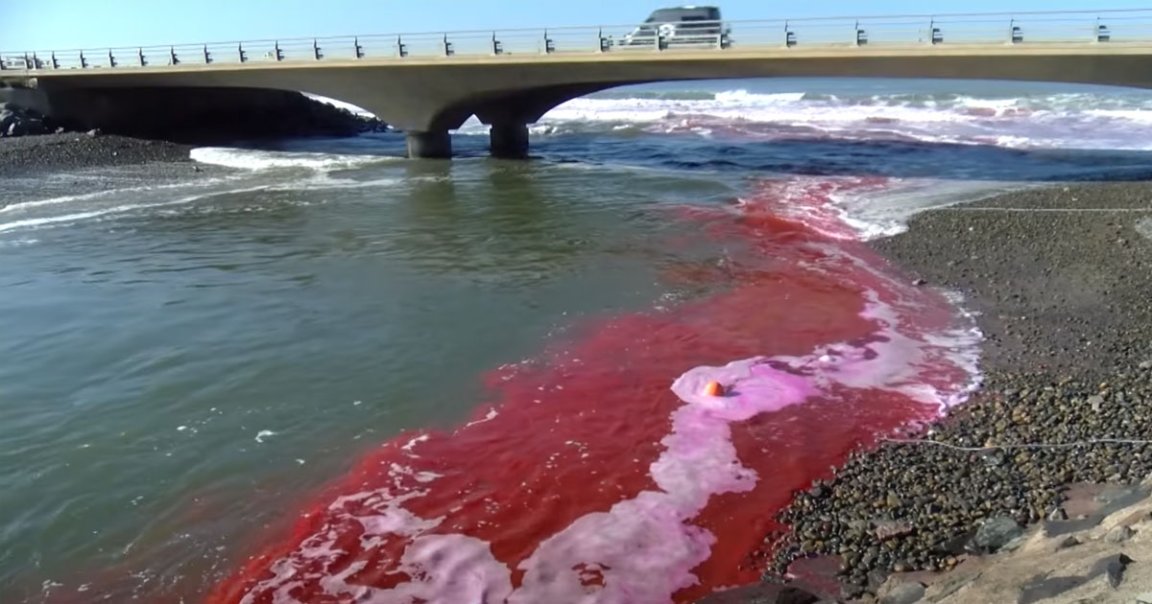
Colorful Coast
Hey, the water look funny to you?
Researchers from the University of California San Diego have conducted the first stage in a series of experiments that involve dying immense quantities of seawater off the coast of a local beach. Their color of choice? Pink.
An amusing one, since in the right lighting you might mistake it for a certain Biblical event, or perhaps an especially grizzly shark attack. But it’s also the most sensible one, easily distinguished from the ocean’s greenish blue tinge.
And don’t worry, the scientists say the dye is environmentally safe.
The purpose of this eye-grabbing experiment, according to a university press release, is “to study how small freshwater outflows interact with the surfzone,” the region where waves break.
Specifically, the researchers are interested in tracking plumes of fresh water’s interactions with the breaking waves of heavier sea water. How these encounters pan out, they say, could provide key insights into the depositing of foreign materials like sediments — and more grimly, pollutants — into the ocean via estuaries.
The pink pigment simply makes the plumes of fresh water easier to track, both to the naked eye and to instruments like drones and ground-bound sensors. These will be accompanied by submerged sensors that will measure stuff like the height of waves or the water temperature.
Back In Pink
As aforementioned, the researchers already conducted their first experiment last week, and they’ll be back for more, with the next tests set for the end of this month and the beginning of February. And while it may be early, they’re already giddy with excitement.
“I’m excited because this research hasn’t been done before and it’s a really unique experiment,” said Sarah Giddings, an oceanographer from UC San Diego’s Scripps Institution of Oceanography who is leading the experiment, in the release.
“We will combine results from this experiment with an older field study and computer models that will allow us to make progress on understanding how these plumes spread,” Giddings added.
The use of pink dye to track nearshore water movements isn’t novel, but what distinguishes the experiment is its focused, zoomed-in scope.
According to Giddings, there’s not a lot research out there on small-scale freshwater plumes converging with breaking waves in the surf zone, so the team’s efforts could help plug that apparent gap in scientific literature.
More on pink water: Pollution Runoff Causes Entire Lake to Turn Bright Pink